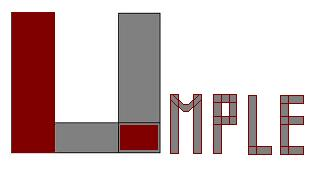Related Research Articles
JUnit is a unit testing framework for the Java programming language. JUnit has been important in the development of test-driven development, and is one of a family of unit testing frameworks which is collectively known as xUnit that originated with SUnit.

A quine is a computer program that takes no input and produces a copy of its own source code as its only output. The standard terms for these programs in the computability theory and computer science literature are "self-replicating programs", "self-reproducing programs", and "self-copying programs".
Common Intermediate Language (CIL), formerly called Microsoft Intermediate Language (MSIL) or Intermediate Language (IL), is the intermediate language binary instruction set defined within the Common Language Infrastructure (CLI) specification. CIL instructions are executed by a CIL-compatible runtime environment such as the Common Language Runtime. Languages which target the CLI compile to CIL. CIL is object-oriented, stack-based bytecode. Runtimes typically just-in-time compile CIL instructions into native code.
In software design and engineering, the observer pattern is a software design pattern in which an object, named the subject, maintains a list of its dependents, called observers, and notifies them automatically of any state changes, usually by calling one of their methods.
In computer programming, unit testing is a software testing method by which individual units of source code—sets of one or more computer program modules together with associated control data, usage procedures, and operating procedures—are tested to determine whether they are fit for use. It is a standard step in development and implementation approaches such as Agile.

NUnit is an open-source unit testing framework for the .NET Framework and Mono. It serves the same purpose as JUnit does in the Java world, and is one of many programs in the xUnit family.
In computer programming, a function object is a construct allowing an object to be invoked or called as if it were an ordinary function, usually with the same syntax. In some languages, particularly C++, function objects are often called functors.
In computer programming, a callback or callback function is any reference to executable code that is passed as an argument to another piece of code; that code is expected to call back (execute) the callback function as part of its job. This execution may be immediate as in a synchronous callback, or it might happen at a later point in time as in an asynchronous callback. They are also called blocking and non-blocking.
In class-based, object-oriented programming, a constructor is a special type of function called to create an object. It prepares the new object for use, often accepting arguments that the constructor uses to set required member variables.

The syntax of Java is the set of rules defining how a Java program is written and interpreted.
In computer programming, an entry point is the place in a program where the execution of a program begins, and where the program has access to command line arguments.
Java Pathfinder (JPF) is a system to verify executable Java bytecode programs. JPF was developed at the NASA Ames Research Center and open sourced in 2005. The acronym JPF is not to be confused with the unrelated Java Plugin Framework project.

Oxygene is a programming language developed by RemObjects Software for Microsoft's Common Language Infrastructure, the Java Platform and Cocoa. Oxygene is based on Delphi's Object Pascal, but also has influences from C#, Eiffel, Java, F# and other languages.
Haxe is a high-level cross-platform programming language and compiler that can produce applications and source code for many different computing platforms from one code-base. It is free and open-source software, released under the MIT License. The compiler, written in OCaml, is released under the GNU General Public License (GPL) version 2.
In object-oriented computer programming, a null object is an object with no referenced value or with defined neutral (null) behavior. The null object design pattern, which describes the uses of such objects and their behavior, was first published as "Void Value" and later in the Pattern Languages of Program Design book series as "Null Object".
This article describes the syntax of the C# programming language. The features described are compatible with .NET Framework and Mono.
Java Native Access (JNA) is a community-developed library that provides Java programs easy access to native shared libraries without using the Java Native Interface (JNI). JNA's design aims to provide native access in a natural way with a minimum of effort. Unlike JNI, no boilerplate or generated glue code is required.
Nemerle is a general-purpose, high-level, statically typed programming language designed for platforms using the Common Language Infrastructure (.NET/Mono). It offers functional, object-oriented, aspect-oriented, reflective and imperative features. It has a simple C#-like syntax and a powerful metaprogramming system.
In software engineering, the module pattern is a design pattern used to implement the concept of software modules, defined by modular programming, in a programming language with incomplete direct support for the concept.

Umple is a language for both object-oriented programming and modelling with class diagrams and state diagrams. The name Umple is a portmanteau of "UML", "ample" and "Simple", indicating that it is designed to provide ample features to extend programming languages with UML capabilities.
References
- ↑ "Self-testing infrastructure-as-code". OpenCredo. Retrieved 2022-12-05.
- ↑ "Self Testing Code". martinfowler.com. Retrieved 2022-12-05.